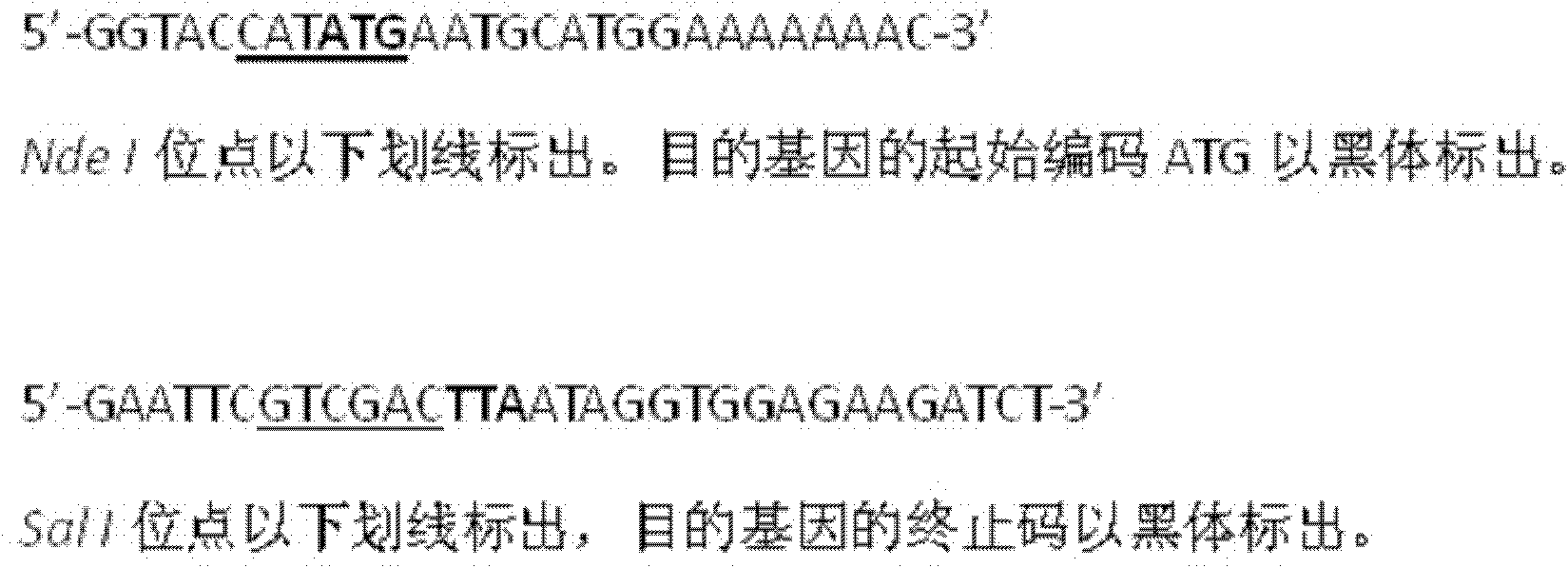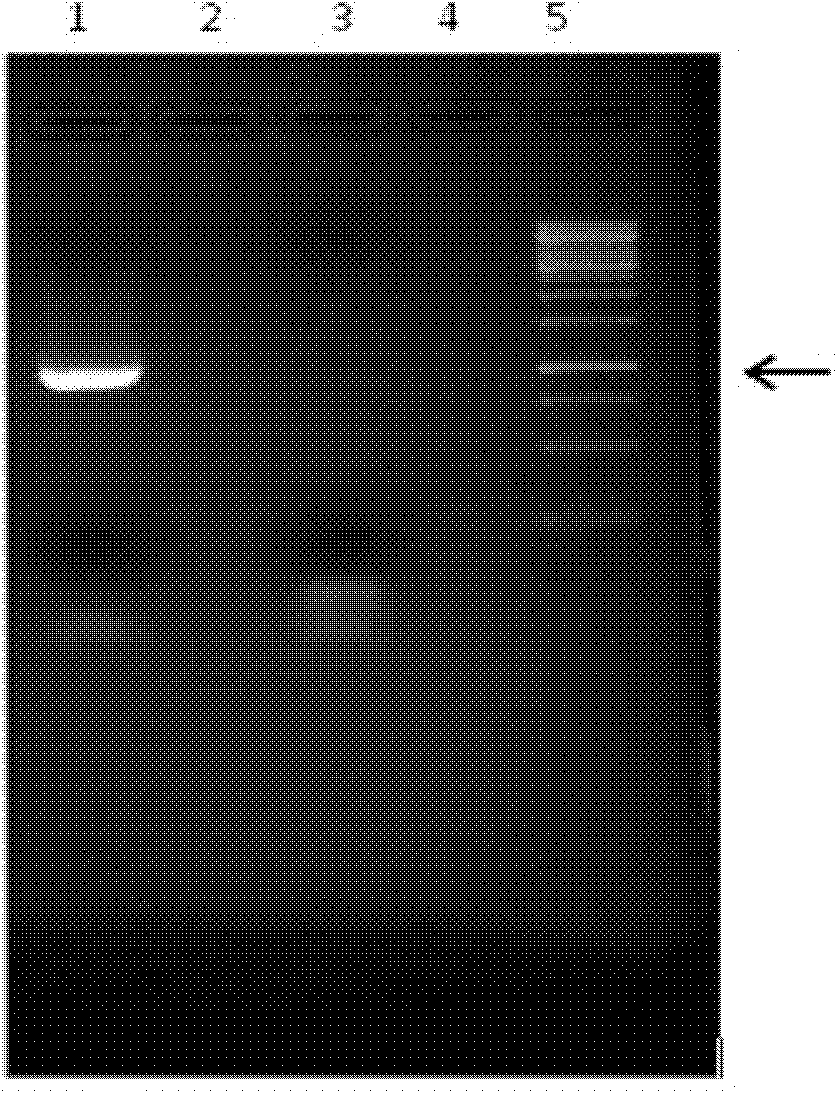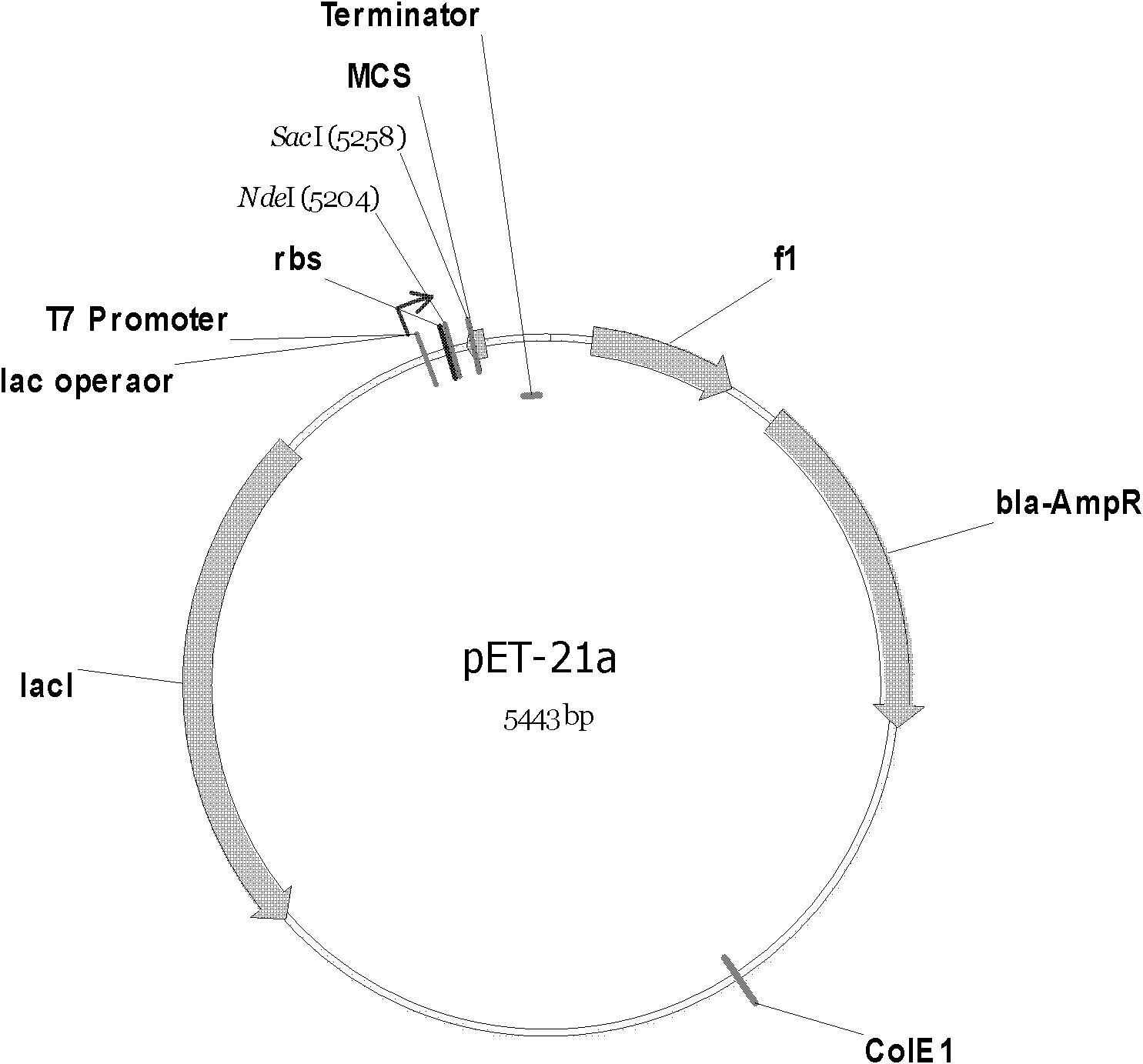A method for preparing a recombinant Prevotella asparaginase
A technology of asparaginase and Wordella, which is applied in the field of asparaginase preparation, can solve the problems of low ratio of target enzyme, difficult quality control, and many process steps, so as to achieve easy product quality, control product quality, The effect of fewer process steps
- Summary
- Abstract
- Description
- Claims
- Application Information
AI Technical Summary
Problems solved by technology
Method used
Image
Examples
Embodiment 1
[0031] PCR Amplification of Asparaginase DNA from Wormella spp.
[0032] Such as figure 1 Shown, the primer nucleotide sequence that is used for PCR amplification is as follows:
[0033] 5'-GGTAC CATATG AATGCATGGAAAAAAAC-3'
[0034] The Nde I site is underlined.
[0035] 5'-GAATTC GTC GAC TTAATAGGTGGAGAAGATCT-3'
[0036] The Sal I site is underlined.
[0037] Such as figure 2 As shown, the PCR amplification reaction was set up as follows: In a 200 μl PCR test tube, add 32.5 μl of water, 10 μl of 5-fold buffer, 1 μl of dNTP (10 mM), 2.5 μl of each of the above primers (10 μM), and 250 ng of Walter’s bacterial genomic DNA, 0.5u of PCR polymerase. The amplification reaction was carried out for 30 cycles, and 25 μl of the reaction solution was taken for electrophoresis on 0.9% agarose, and a single amplified band of about 1 kb was detected under ultraviolet light. Such as figure 2 As indicated, the corresponding 1 kb DNA fragment was excised with a clean blade, and t...
Embodiment 2
[0039] Cloning of Asparaginase DNA from Wormella spp.
[0040] The asparaginase gene of Worella spp. was cloned using the pJET1.2 kit (Fermentas). Take 1 μl of the recovered DNA fragment of asparaginase from Wormella spp., add 10 μl of 2-fold reaction buffer, 50 ng of pJET1.2 blunt-end vector, 7 μl of water, and 1 μl of T4 DNA ligase. Stand at room temperature for 30 min, take 2 μl of the reaction product and transform it into E. coli.
[0041] Pick the transformed bacteria, culture them overnight at 37°C in about 5ml of LB medium (containing 100μg / ml of ampicillin), extract the plasmids, digest them with Nde I and Sal I, and carry out DNA analysis on the plasmids containing 1kb DNA inserts. sequencing.
Embodiment 3
[0043] Expression of Recombinant Wormella Asparaginase
[0044] see image 3 and Figure 4 After verification in the above example 2, it was determined that the plasmid containing the 1kb Asparaginase DNA fragment of Wordella was determined, then digested with Nde I and Sal I (37°C, 1hr), and the 1kb DNA fragment was cut out and recovered with DNA agarose The kit (Shanghai Jierui Bioengineering Co., Ltd.) was used to purify the target DNA fragment. The purified DNA fragment was inserted between the corresponding Nde I and Sal I of the expression plasmid pET21, and ligated with T4 DNA ligase. The ligation product was transformed into E. coli. Pick the transformant and culture it in the medium containing 100 μg / ml ampicillin (37°C), at OD 600 After reaching 0.4-0.8, add 1mM IPTG to induce the expression of asparaginase, and continue to culture for 2-4hr. The culture was harvested, centrifuged at 6000 g for 20 min, the supernatant was discarded, and the pellet was resuspende...
PUM
 Login to View More
Login to View More Abstract
Description
Claims
Application Information
 Login to View More
Login to View More - R&D
- Intellectual Property
- Life Sciences
- Materials
- Tech Scout
- Unparalleled Data Quality
- Higher Quality Content
- 60% Fewer Hallucinations
Browse by: Latest US Patents, China's latest patents, Technical Efficacy Thesaurus, Application Domain, Technology Topic, Popular Technical Reports.
© 2025 PatSnap. All rights reserved.Legal|Privacy policy|Modern Slavery Act Transparency Statement|Sitemap|About US| Contact US: help@patsnap.com



